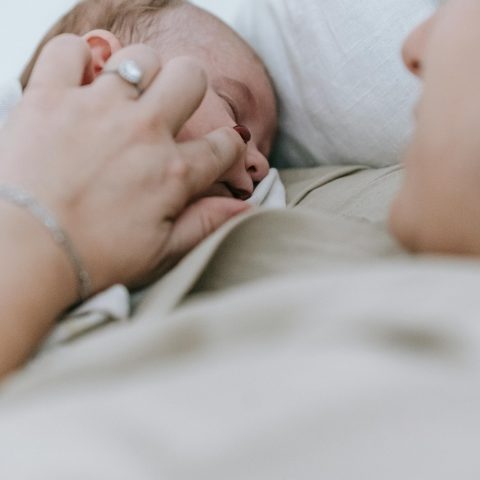One of the most important responsibilities for any parent is to make sure your baby sleeps safely and soundly. Sleep doesn’t just help babies grow up healthy (and also give parents a break); Nonetheless, safe sleeping habits are paramount in minimizing the threats of Sudden Infant Death Syndrome (SIDS) and other sleep-related dangers. There are several expert guidelines to help prevent sleep-related deaths in the United States to instruct parents to make nap time safe for their little ones. This article examines those practices in detail.
What Are Safe Sleep Practices and Why Are They Important?
Safe sleep is so essential; safe sleep should be the goal. The AAP states that adhering to safe sleep recommendations can greatly decrease the risk of SIDS, which is still a leading cause of death in infants under 1 year of age. Furthermore, safe sleep practices reduce the risk of accidental suffocation and other sleep-related injuries.
Subject Line: Safe Baby Sleep Practices
THE VERY BEST SLEEP ENVIRONMENT KEY »
Safe sleep environment is the starting point for safe baby sleep practices. Here’s a series of crucial steps to ensure your baby’s sleeping environment is safe:
Putting Baby to Sleep During Sleep, Always put your baby on their back, as this sleeping position is the safest. Research has found this lowers the risk of SIDS, compared to side or stomach sleepers.
Use a Firm Mattress Keep the crib mattress flat and snug in the crib. Soft mattresses and soft pillows and cushions can be suffocation hazards.
Keep the Sleep Area Hazard-Free Do not put toys, blankets, bumper pads or stuffed animals in the crib. Such objects can also heighten the chance of suffocation or entrapment.
Use an Approved Crib Use a crib, bassinet or portable play yard that is up to the safety standards established by the Consumer Product Safety Commission (CPSC). Say no to drop-side cribs, which are unsafe and no longer in production.
Monitor Room Temperature Overheating has been associated with an increased risk of SIDS. Keep the room at a comfortable temperature, and dress your baby in light, breathable sleepwear.
How to Share a Room Without Sharing a Bed
The AAP advises parents to share a room with their baby for at least the first six months of his or her life — and ideally, up to one year. Room-sharing helps facilitate monitoring of your baby and reduces the risk of SIDS by as much as 50%. But bed-sharing is not recommended because it raises the risk of accidental suffocation.
Safe Sleepwear for Babies
Keep your baby warm without bulky loose blankets by dressing them in one-piece sleepwear, like a wearable blanket or sleep sack. Do not overdress the baby, as this can cause overheating.
Breastfeeding and Safe Sleep
Reducing the risk for SIDS Breastfeeding has been linked to a reduced risk for SIDS. If you are able, breastfeed your baby and practice safe sleep thereafter. Do not breastfeed your baby and fall asleep on the couch or armchair.
Pacifiers and Their Role in Safe Sleep
Using a pacifier during naptime and bed time may lower SIDS risk. If your baby doesn’t accept a pacifier, don’t try and make him/her. Don’t hang pacifiers on strings or put them around your baby’s neck: They can present a choking hazard.
Do Not Expose Yourself to Smoke, Alcohol, and Drugs
Exposure to secondhand smoke also raises the risk of SIDS. Make your baby’s surroundings smoke-free. Time spent with your newborn can be physically and mentally exhausting, so perhaps you should avoid drinking alcohol or taking drugs that may affect your ability to care for your baby.
Regular Pediatric Checkups
Regular pediatric checkups make sure your baby’s growth and development are on target. Guide your pediatrician can also give tailored advice about safe sleeping practices.
The Importance of Tummy Time
Putting your baby to sleep on their back is essential, but so is supervised tummy time during the day. Tummy time strengthens your baby’s neck and shoulder muscles, which is important for healthy development.
Educating Caregivers
If other people will be taking care of your baby, make sure they know about safe sleep practices. The same goes for grandparents, babysitters and daycare providers.
Common Myths About Baby Sleep
Let’s correct some widespread misconceptions about baby sleep:
MYTH 1: Babies Sleep Better on Their Tummies While some babies may seem to be sleeping more soundly on their tummies, this position greatly raises the risk of SIDS.
Myth 2: Crib Bumpers Are A Must Crib bumpers something that you do not need, and can actually be a serious risk of suffocation or entrapment.
Myth 3: Swaddling Is Always Safe Swaddling can be safe, for newborns, but should be phased out as your baby learns to roll over.
More Resources for Parents
To learn about safe sleep practices for babies, visit one or more of these sites:
American Academy of Pediatrics (AAP)
Safe to Sleep Campaign
You’re reading The CPSC to You, a newsletter about consumer product safety from The Times.
Conclusion
Safe sleep for infants is essential for your child’s health and safety. If you follow these expert recommendations, you will be assured that your princely one has a safe and loving sleep environment. Keep in mind, your little one’s safety begins with informed decisions and sustained actions. Make safe sleep a priority, and don’t hesitate to reach out for guidance from health care professionals if you need help.











